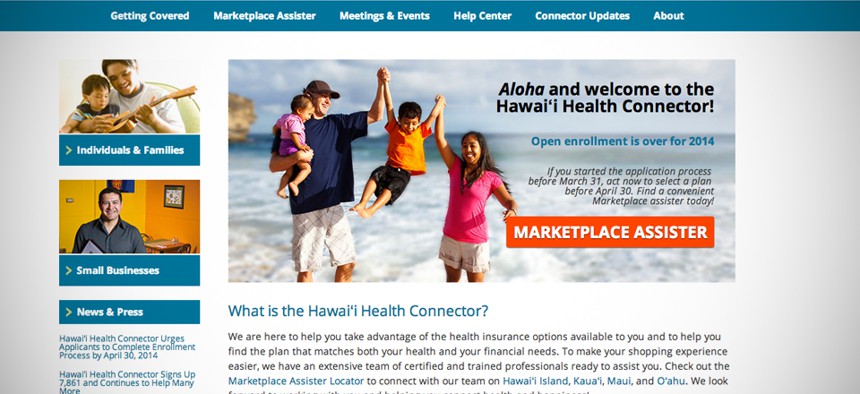State-Based Obamacare Exchanges Cost Far More Than the Federal Marketplace

HawaiiHealthConnector.com
Hawaii spent $920 for each new consumer, while Florida spent only $16.
Hawaii spent $920 to enroll each new Obamacare consumer, while Florida spent only $16.
New data from the Robert Wood Johnson Foundation details the amount spent on consumer assistance for the Affordable Care Act in each state, and like overall enrollment numbers, the state totals vary a huge amount.
Consumer-assistance programs are those intended to help individuals understand and enroll in coverage under Obamacare, including the Navigator program, the In-Person Assister program, and Certified Application Counselors. The totals do not include funding for the exchange systems or other types of public and private outreach.
Overall, the state-based marketplaces spent far more to help get residents enrolled than states in the federal marketplace. State exchanges accounted for 50 percent of total consumer-assistance funds, yet have only 31 percent of all uninsured, according to RWJF. Federal marketplaces accounted for 33 percent of the funding but house 63 percent of the uninsured, and the five partnership states received 17 percent of the assistance funding, yet include only 6 percent of the total uninsured.
State-based exchanges had far more discretion over how much of their exchange establishment grants they would allocate for consumer assistance, while funding on the federal exchange was based to a larger degree on the number of uninsured residents. Thus state-based exchanges had a much larger range in assistance funding: While spending in federal-marketplace states ranged from $16 per enrollee in Florida to $186 per enrollee in Alaska, spending in state-based exchanges was across the board, from $40 in Idaho to $920 in Hawaii.
Top Five Spenders per Enrollee:
1. Hawaii: $920 per enrollee, $7,904,918 total (state-based exchange)
2. District of Columbia: $645 per enrollee; $6,906,057 total (state-based exchange)
3. Arkansas: $442 per enrollee; $19,211,296 total (partnership exchange)
4. West Virginia: $385 per enrollee; $7,647,178 total (partnership exchange)
5. Maryland: $385 per enrollee; $25,620,449 total (state-based exchange)
Bottom Five Spenders per Enrollee:
1. Florida: $16 per enrollee; $15,932,367 total (federal exchange)
2. Wisconsin: $20 per enrollee; $2,772,728 total (federal exchange)
3. Virginia: $20 per enrollee; $4,263,053 total (federal exchange)
4. Pennsylvania: $22 per enrollee; $6,905,518 total (federal exchange)
5. Georgia: $23 per enrollee; $7,194,944 total (federal exchange)
The 25 lowest spenders per enrollee included only three state-based exchanges: Idaho, California, and Connecticut. The top half of big spenders included only six states in the federal exchange: Alaska, South Dakota, North Dakota, Wyoming, Montana, and Mississippi.
"The availability of federal money and the type of marketplace were huge factors in the amount states spent to enroll the uninsured," said Katherine Hempstead, who leads coverage issues at the RWJF. "The real question, which can only be answered in time, is how big of a role states' consumer assistance programs played in overall enrollment success."
A number of other factors are at play as well, including functionality of the exchange system, the degree to which the state has embraced the health care law, and involvement of other enrollment outreach groups, whose funding is not included in these tallies.



